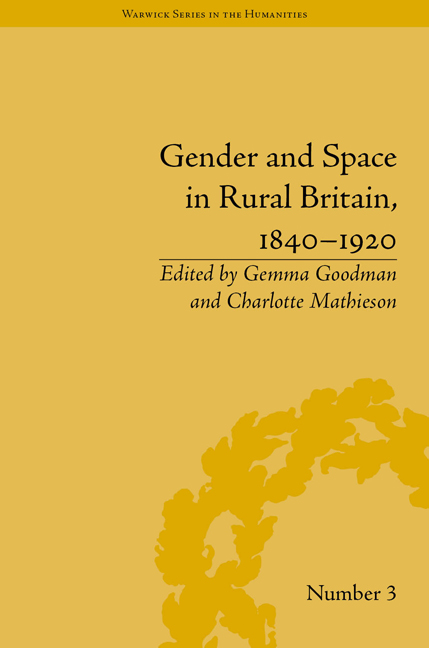Book contents
- Frontmatter
- Contents
- Acknowledgements
- List of Contributors
- Introduction: Gender and Space in Rural Britain, 1840–1920
- 1 Women in the Field
- 2 ‘Between Two Civilizations’: George Sturt's Constructions of Loss and Change in Village Life
- 3 At Work and at Play: Charles Lee's Cynthia in the West
- 4 ‘Going Out, Going Alone’: Modern Subjectivities in Rural Scotland, 1900–21
- 5 ‘Drowned Lands’: Charles Kingsley's Hereward the Wake and the Masculation of the English Fens
- 6 ‘Wandering Like a Wild Thing’: Rurality, Women and Walking in George Eliot's Adam Bede and The Mill on the Floss
- 7 ‘I Never Liked Long Walks’: Gender, Nature and Jane Eyre's Rural Wandering
- 8 Gertrude Jekyll: Cultivating the Gendered Space of the Victorian Garden for Professional Success
- 9 From England to Eden: Gardens, Gender and Knowledge in Virginia Woolf's The Voyage Out
- 10 The Transnational Rural in Alicia Little's My Diary in a Chinese Farm
- Notes
- Index
8 - Gertrude Jekyll: Cultivating the Gendered Space of the Victorian Garden for Professional Success
- Frontmatter
- Contents
- Acknowledgements
- List of Contributors
- Introduction: Gender and Space in Rural Britain, 1840–1920
- 1 Women in the Field
- 2 ‘Between Two Civilizations’: George Sturt's Constructions of Loss and Change in Village Life
- 3 At Work and at Play: Charles Lee's Cynthia in the West
- 4 ‘Going Out, Going Alone’: Modern Subjectivities in Rural Scotland, 1900–21
- 5 ‘Drowned Lands’: Charles Kingsley's Hereward the Wake and the Masculation of the English Fens
- 6 ‘Wandering Like a Wild Thing’: Rurality, Women and Walking in George Eliot's Adam Bede and The Mill on the Floss
- 7 ‘I Never Liked Long Walks’: Gender, Nature and Jane Eyre's Rural Wandering
- 8 Gertrude Jekyll: Cultivating the Gendered Space of the Victorian Garden for Professional Success
- 9 From England to Eden: Gardens, Gender and Knowledge in Virginia Woolf's The Voyage Out
- 10 The Transnational Rural in Alicia Little's My Diary in a Chinese Farm
- Notes
- Index
Summary
Gertrude Jekyll, ‘artist-gardener’ and horticultural journalist, was a key figure in British garden design when the field was gaining credibility as an acceptable female profession at the turn of the nineteenth century. Her initial training was in the respectably feminine pursuit of botanical illustration at the South Kensington School of Art. But when her failing eyesight prevented her from pursuing a painting career, Jekyll ultimately became a garden designer, which enabled her to transfer her training in colour and form from a flat sheet of paper to a three-dimensional, growing, botanical space. She used this to develop unprecedented graduated colour schemes in flower borders, for which she is still known today. Her love of flowers and gardening, which she developed early on in her life, drew her to this pursuit. She recalls that by the age of four, she ‘had already made friends with the Daisies in the Berkeley Square Garden and with the Dandelions in the Green Park’. Although these were socially accepted activities for women, her professional aspirations were unusual. The timeline of her career – beginning with her first article in 1881 and ending with her death in 1932 – bridges the gap between the amateur middle-class woman gardener and the wage-earning professional, demonstrating that she paved the way for women who followed in her footsteps.
- Type
- Chapter
- Information
- Gender and Space in Rural Britain, 1840–1920 , pp. 117 - 130Publisher: Pickering & ChattoFirst published in: 2014



